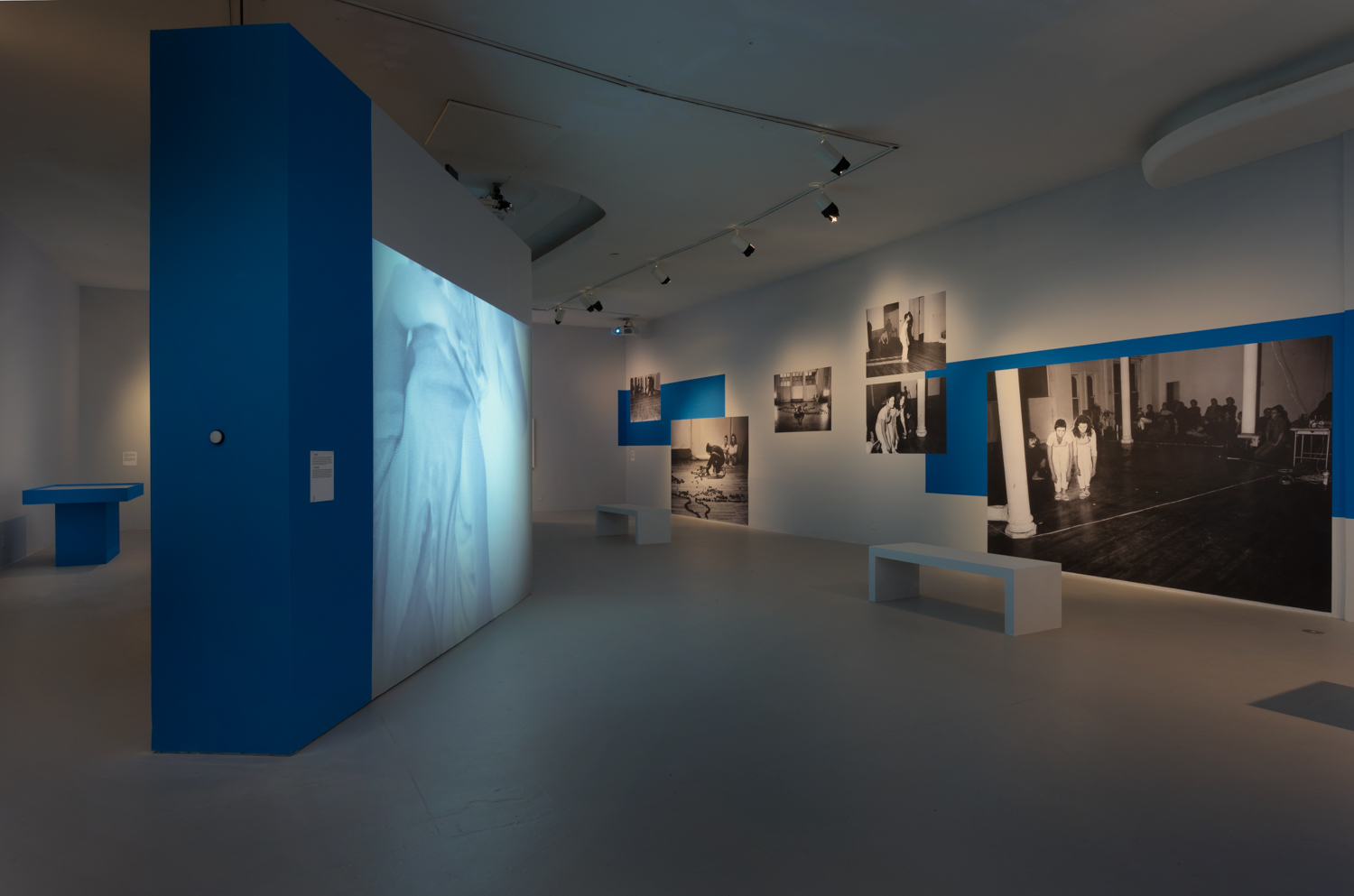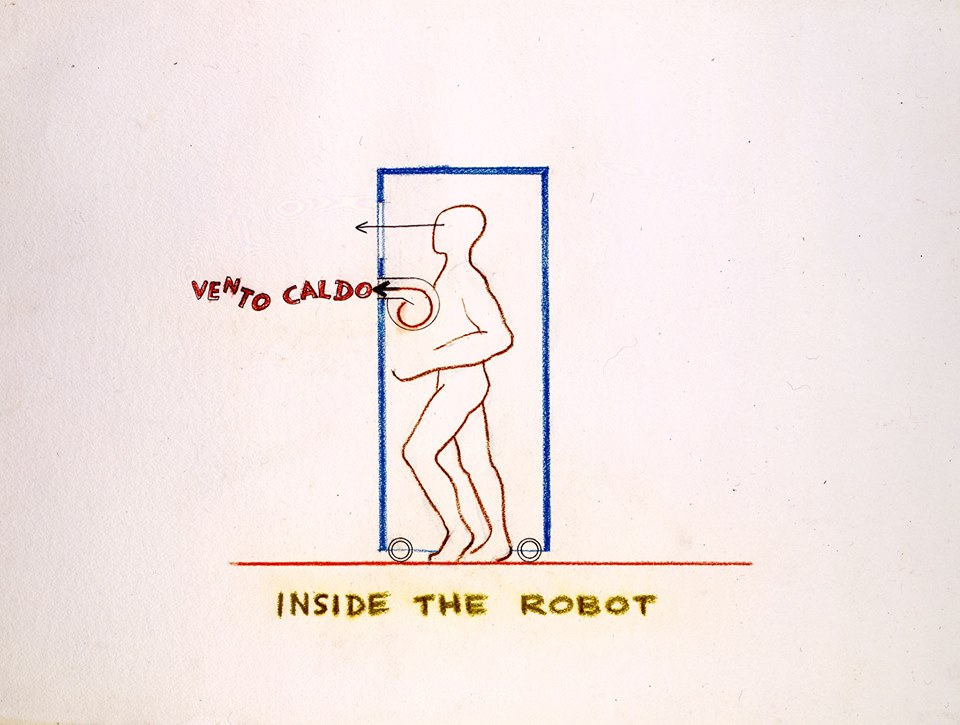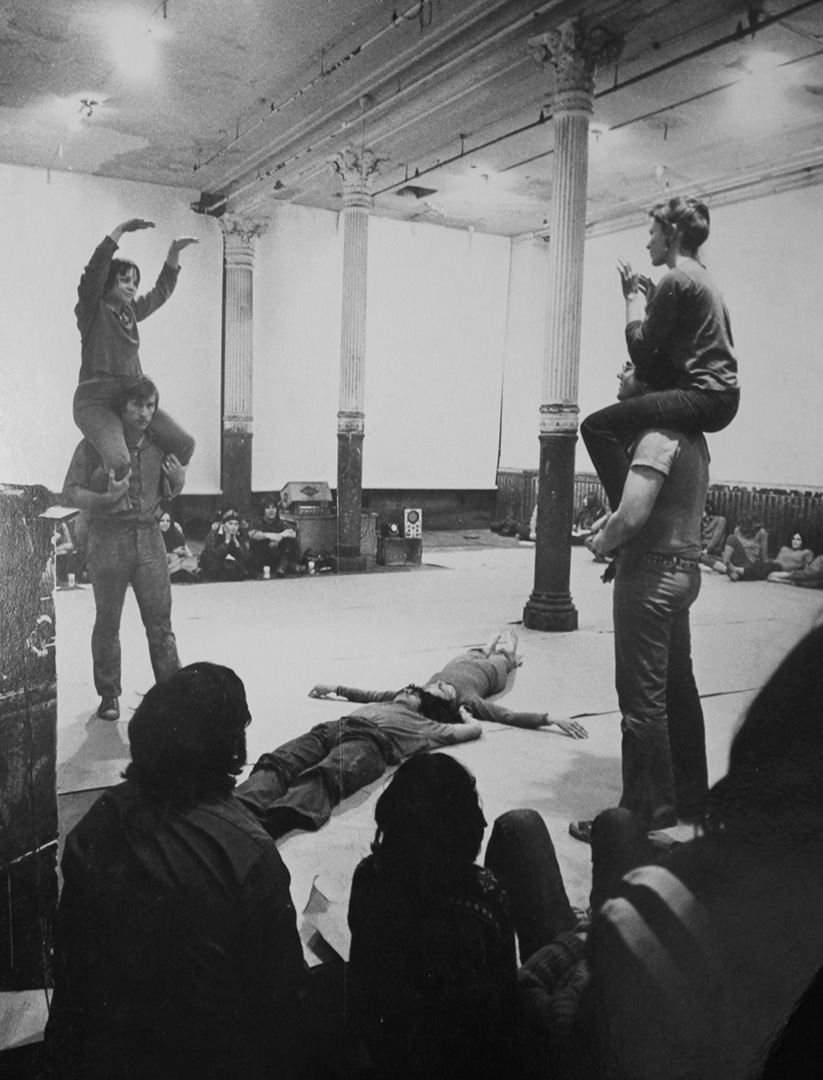
- This event has passed.
Juan Downey: Radiant Nature
September 13, 2017 - December 3, 2017

Juan Downey: Radiant Nature
Curated by Robert Crouch and Ciara Ennis
Los Angeles Contemporary Exhibitions (LACE) and Pitzer College Art Galleries
LACE Opening Reception: September 13, 2017 7-10PM
Pitzer College Art Galleries Opening Reception: September 9, 2017 3-5PM
LACE Exhibition Dates: September 14 – December 3, 2017
Pitzer Exhibition Dates: September 10 – December 8, 2017
Installation photo by Robert Wedemeyer
Juan Downey: Radiant Nature, is a two-part exhibition on the early works of Chilean-born artist Juan Downey as part of the Getty-led Pacific Standard Time: LA/LA initiative exploring the vast subject of Latin American and Latino art in dialogue with Los Angeles.
From the late 1960s until the mid-1970s, Juan Downey (b. Chile, 1940; d. New York, 1993) pioneered interactive, participatory artworks that helped shape his better-known multichannel video installations such as Video Trans Americas (1973–76) and The Thinking Eye (1974-1989). The works that make up Downey’s Electronic Sculptures (1967–71); Happenings and Performances (1968–75); and Life Cycle Installations (1970–73) take radically different forms, but they share similar strategies; conceived as vehicles for interactivity, they are intended to be played with or participated in rather than passively observed.
Downey was especially interested in the potential of technology to facilitate viewer participation, transform social relations, and forge new modes of communication between organic elements or environments and machines or machine systems. Borrowing ideas from second-order cybernetics, he conceived the organic and technological aspects of his work as relational, operating in tandem and alterable by feedback. Viewer-participants interfacing with the Electronic Sculptures, for example, may trigger an array of outcomes—sounds, colored lights, projections—depending on their actions. Similarly, Downey imagined participants in his Happenings and Performances as part of an unpredictable, amorphous system in which performers, video cameras, closed-circuit televisions, laser beams, and viewer-participants are working together. The Life Cycle Installations create an interdependence between mechanic and organic elements—plants, soil, and insects and electronic sensors, cameras, and television monitors—demonstrating Downey’s belief in the potential of cybernetics to solve large-scale environmental issues by rebalancing relationships between humans, technologies, and ecologies.
Juan Downey: Radiant Nature es una exposición en dos sedes enfocada en la obra temprana del artista nacido en Chile Juan Downey que forma parte de Pacific Standard Time: LA/LA, una iniciativa de la Getty dedicada a explorar la amplía temática del diálogo entre el arte latinoamericano y latino y la ciudad de Los Ángeles.
A partir de finales de los 60s y hasta mediados de los 70s, Juan Downey (Chile, 1940 – Nueva York, 1993) concibió obras de arte interactivas y participativas que antecedieron y dieron forma a sus instalaciones mejor conocidas de video en canales múltiples como Video Trans Americas (1973–76) y The Thinking Eye (1974-89). Las obras que conforman las Esculturas Electrónicas de Downey (1967–71); sus Happenings y Performances (1968–75); y las instalaciones de Life Cycle (1970–73) se manifiestan de manera radicalmente distinta pero comparten estrategias similares; planteadas como vehículos de interacción, su intención es propiciar el juego y la participación en vez de la observación pasiva.
Downey estaba particularmente interesado en la capacidad de la tecnología para facilitar la participación del espectador, transformar las relaciones sociales y forjar nuevos modelos de comunicación entre elementos y ambientes orgánicos y sistemas mecanizados. A partir de teorías de la cibernética de segundo orden, planteó los aspectos orgánicos y tecnológicos de su trabajo como simbióticos, operando en conjunto y capaces de alterarse mutuamente a través de retroalimentación. Por ejemplo, dependiendo de la acción que lleven a cabo los espectadores-participantes al interactuar con las Esculturas Electrónicas pueden activar cualquiera de una serie de respuestas: sonidos, luces de colores o proyecciones. De una manera parecida, Downey imaginaba a los integrantes de sus Happenings y Performances como parte de un sistema amorfo e impredecible en el que colaboraban participantes, videocámaras, televisores en circuito cerrado, rayos laser y espectadores activos. Las instalaciones de Life Cycle articulan una simbiosis entre elementos mecánicos y orgánicos—plantas, tierra, insectos, sensores electrónicos, cámaras y monitores televisivos—que demuestra la creencia de Downey en el potencial de la cibernética para resolver problemas ecológicos masivos al alterar el equilibrio de la relación entre humanos, tecnologías y ecologías.
PROGRAMMING
September 9, 3-5PM – Exhibition Opening at Pitzer College Art Galleries
Nichols Gallery – inside Broad Center at the intersection of Platt Boulevard and Mills Avenue
Lenzner Family Art Gallery – on the north end of Atherton Hall on Pitzer Road
September 13, 7-10PM – Exhibition Opening Reception at LACE
November 18, 10AM-3PM – Cybernetics Conference at Pitzer College

Inside the Robot, 1970; Color pencil on paper; 22 1/2 x 30 in. (57.15 x 76.2 cm); Courtesy of the Estate of Juan Downey
Inside the Robot: Reconsidering Cybernetics after Juan Downey
Saturday, November 18, 2017
9:30 a.m.–3 p.m.
Benson Auditorium, Pitzer College
1050 N. Mills Ave., Claremont, CA 91711
In conjunction with the exhibition Juan Downey: Radiant Nature, part of the Getty-led Pacific Standard Time: LA/LA initiative, Inside the Robot: Reconsidering Cybernetics after Juan Downey traces the various strands of Chilean artist Juan Downey’s practice through the lens of second-order cybernetics as evidenced in Downey’s Electric Sculptures, Happenings and Performances, and Life Cycle Installations. This symposium will present a series of challenging and diverse viewpoints on the subject of cybernetics as defined by systems of interaction between the human, non-human, machinic, and digital entities.
9:30am: Tea, Coffee, and Pastries
10am: Keynote Address by Julieta González
11am: Simon Penny—Happenings, Hallucinations and Homeostasis: The Technology Binge of the New York Artworld in the Cybernated, Psychadelic 60s
12:00 – 1:00pm: Lunch
I:00pm: Rodrigo Alonso—Juan Downey’s Multidimensional Art
2:00pm: Film screening of Beatriz da Costa’s Dying for the Other (2011-2012) followed by a short presentation on the work by Dr. Robert Nideffer
This symposium is free and open to the public.
Julieta González will address the inscription of Juan Downey’s work within the different techno-utopias that marked the intersection between art and cybernetics in the 1960s and 1970s: touching upon issues such as generative aesthetics, algorithmic and computational approaches, the machine extensions of humans, feedback, and communication, in his early work and the connection to parallel investigations by groups such as Nouvelle Tendance, GRAV, E.A.T., among others; his incursion into video and the role that feedback and playback played in his works from the early seventies, from the performative dimension of his video-dances to the affiliation to ideas advanced by publications such as Radical Software, as well as the writings of Paul Ryan, and Marshall McLuhan in terms of the subversive potential of television and video envisioned by countercultural movements. Her paper will also chart also the major shifts in his work that coincided with the demise of cybernetics and the shift towards semiotics and language in the late 1970s and early 1980s, that, in his particular case, were also driven by his questioning of the disciplines of ethnography and anthropology.
Simon Penny—Happenings, Hallucinations and Homeostasis: The Technology Binge of the New York Artworld in the Cybernated, Psychadelic 60’s
Looking back from our contemporary techno-social context, it’s difficult to imagine life before iphones, mobile computing, social media, texting, skype, streaming video, GPS, location tracking and live navigation, VR, online gaming and all the other trappings of our high-speed broadband digital lifestyles. This talk will flesh out the techno-social context of the 60s, specifically the 60s art world, looking at the unlikely intersections of drug culture, cybernetics and the civil rights movement that blended into 60s counterculture. Special emphasis will be placed on central concepts of the time, and terms whose meaning has drifted or radically changed due to changes in technology, specifically the rise of digital computing in intervening decades.
Rodrigo Alonso—Juan Downey’s Multidimensional Art
From his early technological works, Juan Downey tackles art as a complex production. This complexity doesn’t point out to the creation of sophisticated pieces but to the necessity of enrich the viewer’s experience. The intellectual environment of his time, but also some ideas that come from his Latin American roots, help him to build an art of multiple dimensions that resists to be apprehended as a whole. This presentation seeks to dive analytically into some of those dimensions in order to contribute to ponder the singular poetics of the Chilean artist.
Film screening of Beatriz da Costa’s Dying for the Other (2011-2012) followed by a short presentation on the work by Dr. Robert Nideffer
Dying for the Other (2011-2012) is Beatriz da Costa’s the last project before she passed away on December 27, 2012 at age 38. Dying for the Other, is a triptych video installation, offering a parallel consideration of mice used in breast cancer research alongside scenes from the artist’s own life. Da Costa suffered from breast cancer and underwent intense medical treatment to combat the disease. Her installation addresses part of our collective social consciousness—pursuing the advancement of science and medicine, but doing so at the sacrifice of other “less intelligent” beings.

Juan Downey: Radiant Nature Book Launch
Sunday, December 3, 1 – 4PM
Presentation by Grant Walquist 2-3PM
“Doing Things Together.”
Grant Wahlquist will present a short talk and exhibition walk through focused on Juan Downey’s collaborations with dancers and choreographers. In these performances and videos, Downey was one of the first to use live-feed video as a choreographic tool or actor. Wahlquist will address the difficulty of researching what were often inherently ephemeral events as well as their unique place in the history of the intersections between dance and visual art.
Grant Wahlquist is a critic, gallerist, and attorney based in Portland and Vinalhaven, Maine. He is a graduate of Fuller Theological Seminary, the University of Nottingham, and the University of Southern California Gould School of Law. A Southern California native, he formerly worked at the Orange County Museum of Art, where he assisted with the 2008 and 2010 California Biennials and exhibitions of the work of Peter Saul and Richard Diebenkorn. His writing has appeared in catalogues published by the Orange County Museum of Art and Los Angeles Contemporary Exhibitions, including the catalogue for Juan Downey: Radiant Nature. He has also published reviews and essays in publications in the U.S. and internationally, such as Frog, Aspect: the Chronicle of New Media Art, Art Ltd, the Journal of Aesthetics and Protest, and the Southern California Interdisciplinary Law Journal.
About the Publication:
This beautiful hardcover book, which accompanies the exhibition of the same name, explores the early work of Chilean artist, Juan Downey (1940-93), made between 1967-75. In contrast to previous exhibitions on Downey’s work, this publication focuses on three early bodies of work—Electronic Sculptures, Happenings and Performances, and Life-Cycle Installations. The publication includes an introduction by exhibition co-curators Robert Crouch and Ciara Ennis, as well as essays by Bill Anthes, Ciara Ennis, Ming-Yuen S. Ma, Julieta González, and Grant Walquist. Also included is a special interview: Marilys Downey in conversation with Stuart Comer.
About PST: LA/LA
Pacific Standard Time: LA/LA is a far-reaching and ambitious exploration of Latin American and Latino art in dialogue with Los Angeles taking place from September 2017 through January 2018. Led by the Getty, Pacific Standard Time: LA/LA is a collaboration of arts institutions across Southern California.
Through a series of thematically linked exhibitions and programs, Pacific Standard Time: LA/LA highlights different aspects of Latin American and Latino art from the ancient world to the present day. With topics such as luxury arts in the pre-Columbian Americas, 20th century Afro- Brazilian art, alternative spaces in Mexico City, and boundary-crossing practices of Latino artists, exhibitions range from monographic studies of individual artists to broad surveys that cut across numerous countries.
Click here to learn more about PST: LA/LA.
Supported by more than $16 million in grants from the Getty Foundation, Pacific Standard Time: LA/LA involves more than 70 cultural institutions from Los Angeles to Palm Springs, and from San Diego to Santa Barbara. Pacific Standard Time is an initiative of the Getty. The presenting sponsor is Bank of America.

Major support for Juan Downey: Radiant Nature is provided through grants from the Getty Foundation.

The exhibition is also generously supported by Dirección de Asuntos Culturales, DIRAC, Ministerio de Relaciones Exteriores, Embassy of Chile; Pasadena Art Alliance; and Estrellita B. Brodsky.
![]()
![]()
